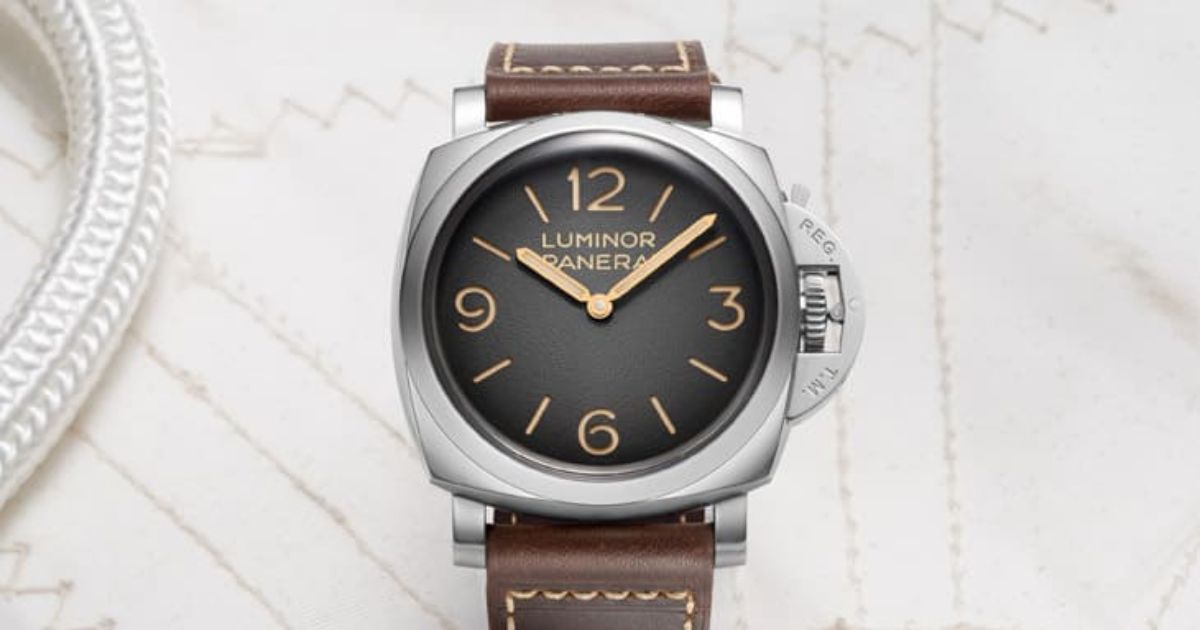Our Magazine
From Diving Depths to Wrist Icons: The Panerai Luminor Story

If you were to line up the most iconic, instantly recognizable watch silhouettes in the world, a few classics would immediately come to mind. Among them, standing with a quiet, muscular confidence, would be a Panerai Luminor. Its design is not one of delicate filigree or ornate complication, but of pure, unadulterated purpose. It is a watch born from the shadows of the sea, forged in the clandestine world of military espionage, and elevated to a symbol of modern horological passion.
The story of the Luminor is not just a tale of a watch; it’s a narrative of necessity, innovation, and a remarkable post-war resurrection. For any budding watch enthusiast, understanding Panerai is to understand how a tool can transcend its function to become a legend.
The Secretive Birth: Panerai and the Gamma Men
To understand the Luminor, we must first go back to its predecessor and the extraordinary context of its creation. In the early 20th century, Officine Panerai, based in Florence, Italy, was primarily a supplier of precision instruments to the Royal Italian Navy. Their deep-sea diving unit, the Gamma men, were the equivalent of the British SAS or the U.S. Navy SEALs—elite commandos performing high-risk underwater operations.
These missions, often conducted under the cover of darkness or in the murky depths, demanded a tool that no existing watch could provide. It needed to be incredibly legible in total darkness, water-resistant to significant depths, and robust enough to withstand brutal treatment. In the 1930s, Panerai delivered the Radiomir.
The Radiomir was a marvel of its time. It featured a large, cushion-shaped case (a massive 47mm by the standards of the era), a wire lug system for secure strap attachment, and, most importantly, a dial coated with a radium-based paste—the “Radiomir” itself. This substance provided the unparalleled luminosity the commandos needed. Panerai, acting as an assembler, housed high-quality, manually-wound movements from the Swiss manufacturer Rolex inside these purpose-built cases.
The Radiomir was a perfect tool, but it was a secret one. Locked away in military vaults and known only to a select few, it was the genesis of the Panerai DNA.
The Evolutionary Leap: The Invention of Luminor
The Radiomir was brilliant, but not perfect. As time went on, two areas for improvement emerged. The first was the radium-based luminous material; while effective, its radioactive properties were becoming a growing concern. The second was the water-resistance of the crown—a perennial weak point on any dive watch.
In the late 1940s, Panerai addressed both issues with a solution so definitive it would give birth to an entirely new model line and the brand’s most iconic feature.
First, they replaced the radium with a new substance based on Tritium, a less hazardous radioactive isotope. This new compound was named “Luminor,” a name that would soon become legendary.
Second, and most visually striking, was the invention of the Crown Protecting Device. Panerai’s engineers designed a spring-loaded, half-bridge lever that could be locked down over the crown, pressing a seal against it to form a water-tight barrier. To release it, you simply unlatched the lever, allowing the crown to be pulled out to set the time. This wasn’t a decorative element; it was a functional, patented invention (Patent #OG 48, 1956) that provided a radical solution to a critical problem.
This new case, with its distinctive crown guard, was christened the Luminor. Along with the new name, the design evolved: the wire lugs were replaced with more integrated, wider lugs, and the case became even more robust. The Panerai Luminor, as we know its core identity, was born. Yet, still, it remained a secret, a tool for the few.
The Long Sleep and the Unlikely Resurrection
For decades after the war, the Luminor languished in obscurity. Panerai produced a handful of watches for foreign navies, including Egypt, but the world at large had no idea these magnificent instruments existed. The brand continued its work as a supplier of optical and navigational instruments, its watchmaking legacy seemingly a closed chapter.
Then, in the 1990s, a perfect storm of events occurred. A former Italian Navy officer mentioned these legendary watches to a young, ambitious watchmaker and designer named Giovanni Panerai, a direct descendant of the founder. Intrigued, he explored the family archives and discovered the historic designs. Sensing their potential, he decided to launch a limited commercial run.
The timing was impeccable. The rise of the “oversized” watch trend was beginning, and a new generation of collectors was searching for something with history, character, and presence. In 1993, Panerai released the limited-edition Luminor and Luminor Marina to the public. The response was polite but niche. The true catalyst for the “Panerai phenomenon” was just around the corner.
In 1995, action movie superstar Sylvester Stallone walked into a Panerai boutique in Rome. He was immediately captivated by the Luminor’s unique, powerful aesthetic. He purchased several pieces and later commissioned a special limited edition, the “Daylight” (Ref. PAM 5218-202/A), which he gifted to friends and wore prominently in his film Daylight. Overnight, the watch that was born for covert operations was thrust into the global spotlight. The combination of Hollywood glamour and a genuine, untold military history was irresistible. The legend was reborn.
Deconstructing the Icon: The Luminor's DNA
So, what makes a Luminor a Luminor? Let’s break down the elements that have made it a permanent fixture in the horological landscape.
-
The Crown Guard Bridge: This is the heart and soul of the Luminor. It’s the single most recognizable feature, a bold statement of purpose that dominates the watch’s profile. It is a piece of engineering history worn proudly on the wrist.
-
The Cushion Case: Unlike round or tonneau-shaped cases, the Luminor’s cushion case is a statement of pure geometry. It sits on the wrist with a distinct, commanding presence that is both vintage and modern.
-
The Sandwich Dial: Another brilliant piece of functional design. The dial is actually constructed from two layers. The top layer has cut-out numerals and indices, beneath which is a second layer coated with Super-LumiNova (the modern, non-radioactive successor to Luminor). This creates a stunning, deeply set effect with incredible luminosity that doesn’t degrade over time, as the lume is protected beneath the top plate.
-
Maximal Legibility: From its military origins, the Luminor retains a stark, minimalist dial. Often featuring only hour markers, a small seconds sub-dial at 9 o’clock, and the “Luminor Marina” text, it is a masterclass in telling the time at a single glance, day or night.
-
The Robust Strap System: The wide, integrated lugs with their quick-release spring bar systems allow for incredibly easy strap changes. This has spawned a entire subculture of Panerai strap collectors, enabling owners to radically alter the watch’s character from casual to formal with a simple switch.
The Luminor Today: A Legacy Secured
Today, the Panerai Luminor collection has expanded far beyond its base model. It now includes chronographs, tourbillons, perpetual calendars, and models with a staggering range of in-house manufactured movements. Panerai has pioneered new materials like BMG-Tech (Bulk Metallic Glass), Carbotech, and EcoPangaea, proving that its spirit of innovation is very much alive.
Yet, through all this evolution, the soul of the Luminor remains intact. When you strap a Luminor to your wrist, you are not just wearing a timepiece; you are wearing a piece of history. You are connected to the silent, brave dives of the Gamma men, to the ingenious minds who solved a critical problem with a simple lever, and to the moment a sleeping giant was awoken by a Hollywood legend.
It is a story of transformation—from the secretive, functional depths of the ocean to its status as a true wrist icon. And that is a story worth telling every time you check the time.













